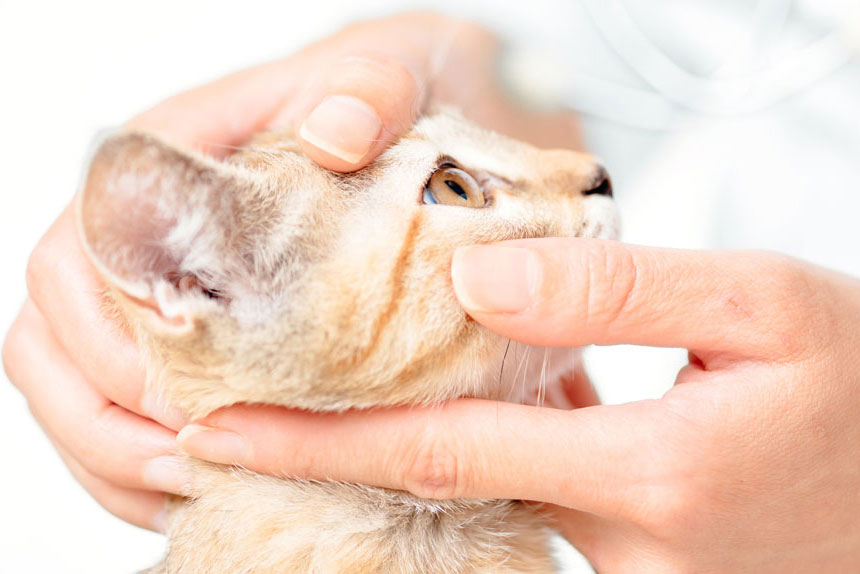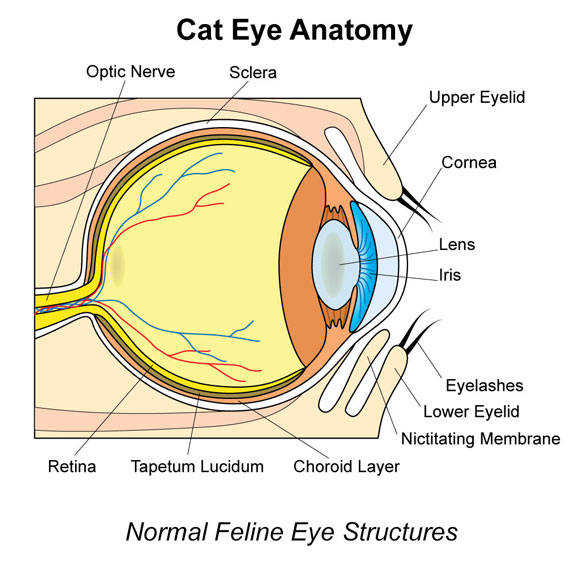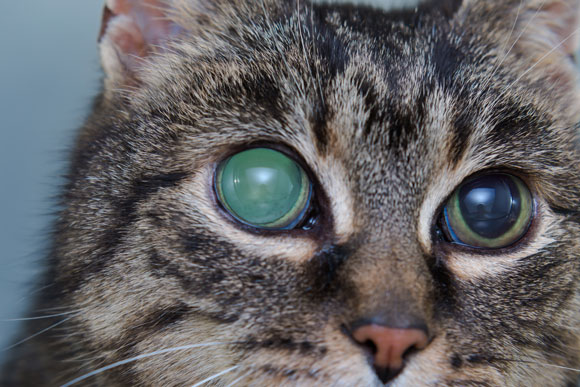Glaucoma in Cats

Glaucoma is an eye condition in cats that can be very serious. In fact, glaucoma is an emergency that needs treatment right away or the cat may lose sight in that eye.
What Is Glaucoma in Cats?
Glaucoma occurs when the pressure inside the eye is too high. IOP is intraocular pressure, and during glaucoma, that pressure is increased.
IOP can be measured by a veterinarian using a tonometer. There are several types of tonometers, but each of them lets the veterinarian know what the pressure is inside the eye. If it is high, the cat is diagnosed with glaucoma.
When IOP is too high, it damages the delicate structures inside the eye, including the retina and optic nerve, and decreases vision.

What Causes Glaucoma in Cats?
The eye is filled with liquid called aqueous humor. Aqueous humor contains nutrients that keep the inner components of the eye healthy. It also delivers oxygen to those structures.
Within the eye, the ciliary body produces aqueous humor and also controls the lens. The fluid is produced continuously and flows through the eye, with extra draining from the area between the cornea and iris. This area is known as the drainage angle.
Glaucoma happens when fluid doesn't drain properly out of the eye, builds up, and causes abnormally high pressure inside the eye. There are two main types of glaucoma: primary and secondary.
- Primary glaucoma is when there is a structural problem with the eye that causes the drainage angle to be too narrow. Primary glaucoma is fairly rare in cats, but Siamese and Burmese breeds may be genetically predisposed to it. Usually, primary glaucoma is present in both eyes.
- Secondary glaucoma is when another problem causes the drainage angle to decrease. It may be present in one or both eyes. Some of the most common conditions that cause secondary glaucoma in cats are:
- Uveitis, which is inflammation inside the eye. This is the most common cause of glaucoma in cats and is due to proteins and other byproducts of the inflammatory condition blocking the drainage angle. Uveitis in cats is commonly caused by infection with toxoplasmosis, FIP, FIV, or FeLV.
- Severe eye infection, like that caused by herpesvirus in cats. The inflammation from the eye infection can cause scar tissue inside the eye.
- An ocular tumor.
- Bleeding inside the eye, which can be from a clotting disorder or another condition.
- Trauma that affects the eye.
Signs of Glaucoma in Cats
Because glaucoma can cause blindness quickly, it's crucial that cat owners know what to look for that may indicate their cat has high IOP. If you see any of these signs in your cat, get to a vet right away.

- Pain, which may manifest as not moving around, hiding, rubbing at the eye, clinginess, or not eating.
- Bulging eye.
- Squinting and watering of the eye.
- Blue tint to the cornea.
- Redness in the whites of the eyes.
- Pupil may be dilated.
Unfortunately, by the time these signs are noticed, damage has often already been done inside the eye, and some vision loss may have occurred. Some vision may be able to be saved with quick, aggressive treatment, depending on the course of the condition.
Treatment of Glaucoma in Cats
The treatment of glaucoma is aimed at maintaining eye pressure as close to normal as possible. If your veterinarian diagnoses glaucoma, he or she may recommend a referral to a veterinary ophthalmologist for further testing to get at the root of the problem. In the meantime, eye drops may be prescribed. Those are generally aimed at fighting inflammation and pain. In some cases, glaucoma in cats requires enucleation, or removal of the affected eye.
Glaucoma in cats is an emergency. There may be only a short time to save some eyesight.
To learn more about other eye conditions in cats, check out this article and the links inside it: "Eye Problems in Cats: An Overview."
You May Also Like These Articles:
Eye Problems in Cats: An Overview
Eye Infections in Young Kittens
Notice: Ask-a-Vet is an affiliated service for those who wish to speak with a veterinary professional about their pet's specific condition. Initially, a bot will ask questions to determine the general nature of your concern. Then, you will be transferred to a human. There is a charge for the service if you choose to connect to a veterinarian. Ask-a-Vet is not manned by the staff or owners of CatHealth.com, and the advice given should not delay or replace a visit to your veterinarian.




